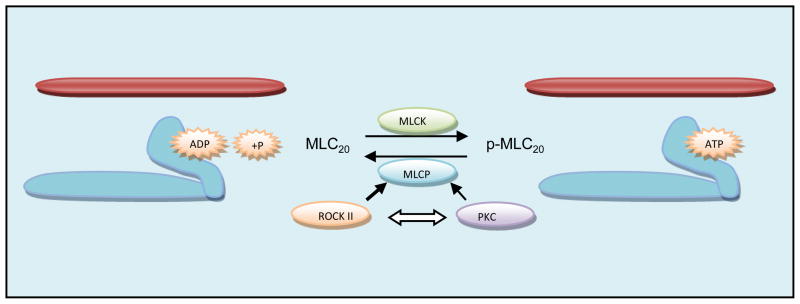Figure 2.
Maintenance of initiated cross bridge-cycling (by Ca2+/MLCK/phosphorylated-MLC20 or p-MLC20) in the sustained smooth muscle contraction or the basal myogenic tone depends on the mechanisms that inhibit MLCP. (Reaction that represents lack or low level of p-MLC20 points towards the left, and the one for the higher levels of p-MLC20 points towards right). MLCK drives the reaction towards right, and MLCP will change the direction to the left. Likewise, MLCP inhibition either by ROCK II or PKC will drive the reaction to the right. In this regard, as discussed in the text and in the Figure 4 legend below, RhoA/ROCK pathway is predominant as compared with the PKC in the basal myogenic tone. In addition, as indicated, there appears to be a cross-talk between these pathways. In the phasic smooth muscles such as that of the esophageal body and the ASM in the basal state, MLCP may be unleashed (because of the subdued inhibitory RhoA/ROCK or PKC pathways), thus keeping these smooth muscles totally relaxed in the absence of any agonist or stimulus. In such phasic smooth muscles however, in response to an appropriate agonist or stimulus, the tissues respond to a phasic or transient contraction following an increase in p-MLC20 which is dephosphorylated immediately (in a matter of a few sec., depending upon the stimulus), by the leftward reaction by MLCP, returning it to its original relaxed state.

